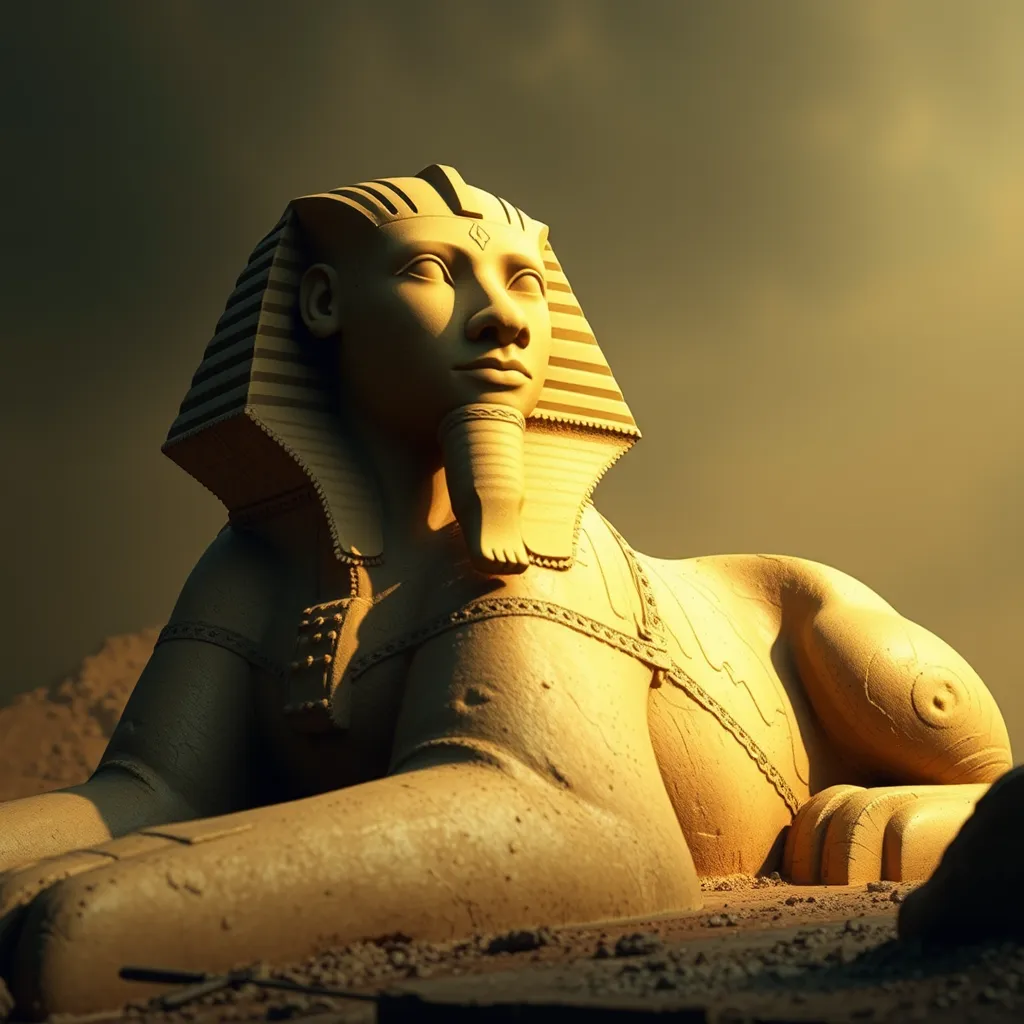The Sphinx in Roman Literature: References and Adaptations
I. Introduction
The Sphinx, a creature with the body of a lion and the head of a human, has captivated the imaginations of cultures throughout history. This enigmatic figure, rooted in mythology, has become a symbol of mystery, knowledge, and the challenges of human existence.
In ancient cultures, the Sphinx held significant importance, often representing the intersection of humanity and divinity. Through its riddles, it posed challenges that tested the wisdom and intellect of those who encountered it. This article aims to explore the references and adaptations of the Sphinx in Roman literature, examining how this mythical creature was embraced and interpreted by Roman poets, playwrights, and philosophers.
II. Historical Context of the Sphinx
The origins of the Sphinx can be traced back to Egyptian mythology, where it was often depicted as a guardian figure, protecting sacred spaces and monuments. The most famous representation is the Great Sphinx of Giza, which symbolizes strength and wisdom.
As the Sphinx transitioned into Greek culture, it took on new meanings, particularly through the myth of Oedipus, who famously answered its riddle to save Thebes. This adaptation introduced themes of knowledge, fate, and human struggle.
In Roman literature, the Sphinx was reinterpreted, reflecting both admiration for Greek culture and a unique Roman perspective. Roman authors incorporated the Sphinx into their works, adapting its symbolism to fit the social and political landscapes of their time.
III. The Sphinx in Roman Poetic Works
A. Mention in works by Virgil
Virgil, one of Rome’s most celebrated poets, referenced the Sphinx in his epic, the “Aeneid.” The Sphinx serves as a metaphor for the trials and tribulations faced by Aeneas on his journey to found Rome.
- Contextual analysis: The Sphinx’s presence in the “Aeneid” highlights the theme of fate and the inevitability of challenges in the pursuit of destiny.
- Symbolism and themes: Virgil uses the Sphinx to symbolize the unknown and the tests that must be overcome for success.
B. References in Ovid’s Metamorphoses
Ovid’s “Metamorphoses” includes a vivid portrayal of the Sphinx, emphasizing its role as both a guardian and a tormentor.
- Narrative significance: In Ovid’s narrative, the Sphinx’s riddles serve as a pivotal moment, representing the struggle between knowledge and ignorance.
- Characterization of the Sphinx: Ovid characterizes the Sphinx not merely as a monster but as a complex figure embodying the duality of wisdom and danger.
IV. The Sphinx in Roman Drama
A. Adaptations in plays and performances
The Sphinx also found its place in Roman drama, where it was often depicted as a formidable challenge to the hero. Playwrights adapted the character for various theatrical productions, using it to explore themes of knowledge, power, and human struggle.
B. The Sphinx as a symbol of mystery and challenge
In Roman theater, the Sphinx represented the mystery of the unknown. Its riddles and challenges became metaphors for the trials faced by the protagonists.
C. Comparison with Greek theatrical representations
Compared to Greek representations, the Roman adaptations often focused on the psychological aspects of the Sphinx, emphasizing the internal conflicts faced by characters as they confronted their fears and uncertainties.
V. The Sphinx in Roman Philosophical Texts
A. Philosophical interpretations and allegories
Philosophers in ancient Rome engaged with the symbolism of the Sphinx, interpreting it as an allegory for the pursuit of knowledge. The creature’s riddles served as a metaphor for the complexities of understanding the world.
B. The Sphinx as a representation of knowledge and ignorance
The Sphinx embodied the tension between knowledge and ignorance, prompting reflections on the nature of wisdom and the human condition.
C. Influence on Roman thought and literature
This philosophical engagement influenced Roman thought, leading to a deeper exploration of themes related to knowledge, fate, and human agency in literature.
VI. Artistic Representations and Cultural Impact
A. Visual depictions in Roman art and sculpture
The Sphinx was also a popular subject in Roman art and sculpture. Artists often depicted the creature in various forms, showcasing its dual nature as both guardian and challenger.
B. The Sphinx’s role in Roman architecture
Architecturally, the Sphinx was incorporated into public buildings and monuments, serving as a reminder of the enduring legacy of this mythical creature in Roman culture.
C. The legacy of the Sphinx in later cultural adaptations
The Sphinx’s influence extended beyond Rome, impacting artistic and literary traditions in later cultures, including the Renaissance and beyond.
VII. The Sphinx in Later Literary Traditions
A. Influence on medieval literature and Renaissance adaptations
During the medieval period, the Sphinx continued to be a symbol of mystery and knowledge, influencing writers and poets in their works. The Renaissance saw a revival of interest in classical themes, with the Sphinx often serving as a motif in literature and art.
B. Modern interpretations and references in contemporary works
In modern literature, the Sphinx remains a powerful symbol. Contemporary authors and artists draw on its imagery to explore themes of identity, knowledge, and the human experience.
C. The enduring legacy of the Sphinx motif
The Sphinx’s motif endures in various forms, reflecting its timeless appeal and the universal themes it represents.
VIII. Conclusion
In summary, the Sphinx plays a significant role in Roman literature, serving as a multifaceted symbol that reflects the complexities of knowledge, fate, and the human condition. Its adaptations in poetry, drama, and philosophy illustrate its enduring impact on Roman culture and beyond.
As we reflect on the Sphinx’s legacy, it is evident that this mythical creature continues to inspire exploration and interpretation across various cultural contexts. Future research may delve deeper into the Sphinx’s influence on literature and art, revealing new insights into its significance throughout history.



